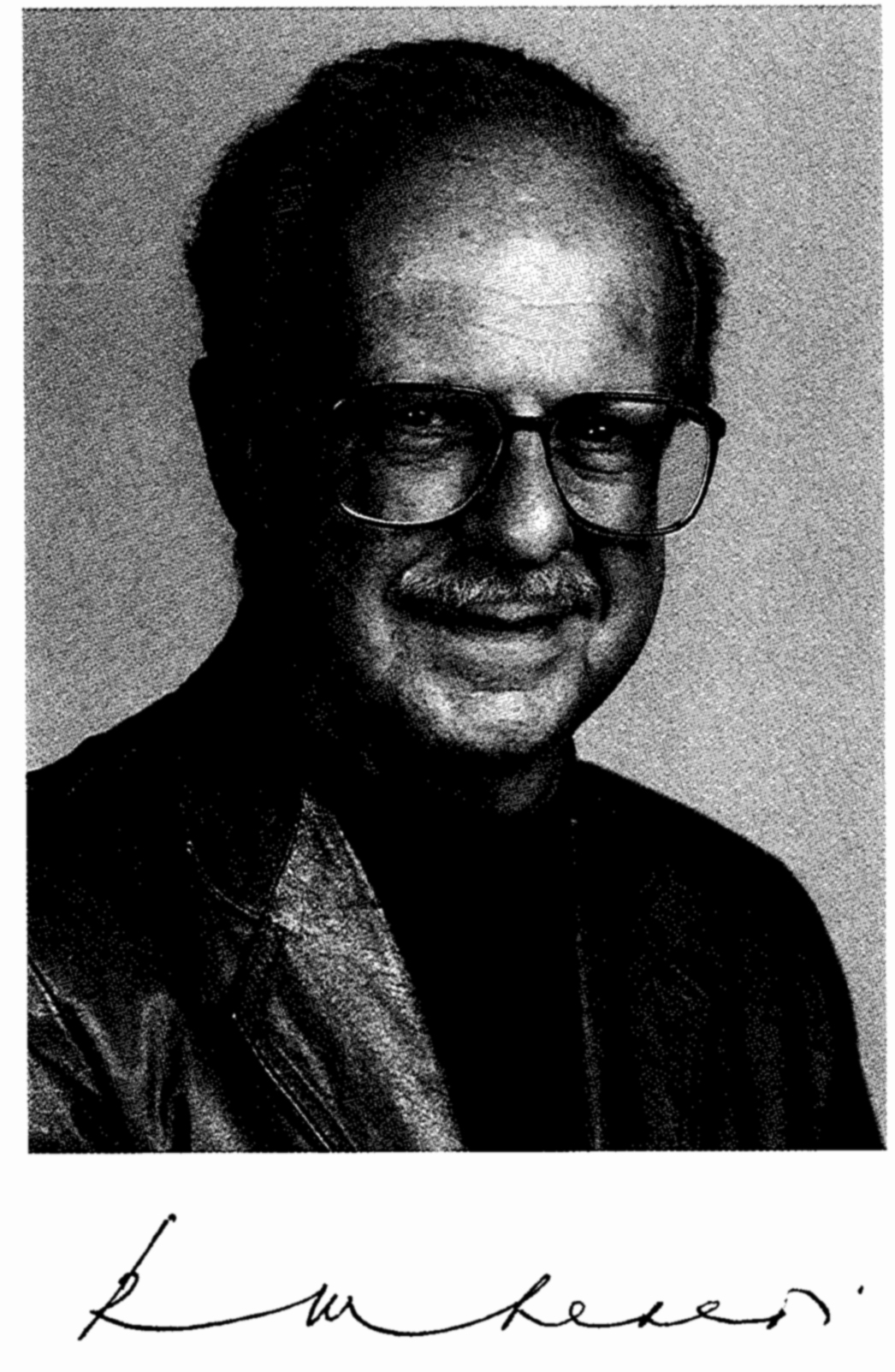Page 151
JERRY R. JUNKINS
1937–1996
BY MARK SHEPHERD, JR.
JERRY R. JUNKINS, chairman, president, and chief executive officer of Texas Instruments Incorporated (TI), died on May 9, 1996, of a heart attack while on a European tour of TI manufacturing facilities.
Jerry was born December 9, 1937, in Fort Madison, Iowa, to Ralph and Selma Junkins. He was one of four children the couple reared in Montrose, Iowa, a town of about 600 that hugs the Mississippi River. During the summers, Jerry worked at his father's automotive garage, fixing tires, polishing cars, and pumping gas. During the school months, he played on the school baseball team and delivered the town newspaper.
He graduated salutatorian among a class of twenty-five students. His future wife, Sally Schevers, was valedictorian. The couple was married for thirty-seven years at the time of his death.
Jerry earned a bachelor's degree in electrical engineering from Iowa State University in 1959, and a master's in engineering administration from Southern Methodist University in 1968. He also received an honorary doctorate of engineering from Rensselaer Polytechnic Institute in 1989 and was member of the National Academy of Engineering.
Jerry worked his entire adult life at Texas Instruments in Dallas, Texas. Joining TI in 1959, Jerry spent most of his operational career in the company's defense business as a manufacturing engineer and supervisor, and he eventually became manager of
Page 152
the entire business. Over the years, he was responsible for radar projects and systems, the Shrike missile program, assembly and test functions, and others.
His commitment to quality and excellence and his ability to build teams where ordinary people produced extraordinary results continued to lift him through the management ranks.
By the early 1980s, Jerry had assumed broader management responsibilities, with several additional TI businesses reporting to him. TI's data systems, industrial systems, consumer products, and the company's worldwide information systems network were under Jerry's direction.
Jerry became president and chief executive officer in 1985, and chairman in 1988. Under his leadership, TI executed a series of strategic transitions to reposition each of its major businesses to better compete in the 1990s and beyond. And, in 1992, the company's defense business won the Malcolm Baldrige National Quality Award.
“TI's most valuable asset is its people, and if we forget that, we are destined to be something less than we are capable of being,” Jerry said. “The challenge is to make this company a human place, a place where people like to work, and still do what's right for the company, the shareholders and our future.”
Jerry served on the board of directors of Caterpillar Inc., the Procter & Gamble Company, and 3M. He was also a member of the board of directors of the U.S.-Japan Business Council and the Dallas Citizens Council, and a member of the board of trustees of Southern Methodist University. He was a presidential appointee to the Advisory Committee on Trade Policy and Negotiations and was a member of the Business Council.
At the time of his death, one of Jerry's business-related passions was furthering international free trade ideals. He served as chairman of the Business Roundtable's International Trade and Investment Task Force. He believed that free trade worldwide in today's business market economy was vital to global business success. He worked diligently to help pass the North American Free Trade Act, and he served as chairman of the Alliance for GATT NOW, a business coalition formed in 1994 to secure passage of the GATT Uruguay Round Agreement.
Page 153
Jerry was deeply committed to the furtherance of educational opportunity at many levels, and his support was uncommonly strong. His most passionate civic involvement was in the area of education of our young people, where he believed that every child can learn. His literacy efforts focused on seeing that every child in Texas was reading at grade level when they left the third grade.
As chairman for many years of the Dallas Citizens Council Education Committee, he was a leader in education reform efforts in the Dallas Public Schools, in Head Start programs, and in statewide education reform efforts.
In November 1995, Jerry received the John B. Connally Award from the Just for the Kids Foundation for his work in education, and in December 1995, he was presented the International Leadership Award from the U.S. Council for International Business. He was a guardian angel for Paul Quinn College, a predominantly African-American college in Dallas that recognized him as one of its Outstanding Supporters.
Jerry embodied strong ethical and business values. He valued the contribution of every TI employee and encouraged creativity and innovation. His commitment and integrity extended beyond his work at TI. He gave unselfishly of his time to support education, government, and civic affairs while always remembering his first priority—his family. Surviving Jerry is his wife, Sally; daughter, Kirsten, and son-in-law, Mike Kerrigan; daughter, Karen Junkins; and two grandchildren.
Jerry viewed his role as the chance to make a difference. “Why be here if you can't make a difference,” he said.
The things he practiced, put in place, and believed in still touch people's lives today:
-
a company poised to take advantage of a networked world,
-
young people who were given a head start in their education and lives,
-
a community that came to expect the best from TI and its leadership,
-
a global economy where free trade set the stage for a networked society, and







